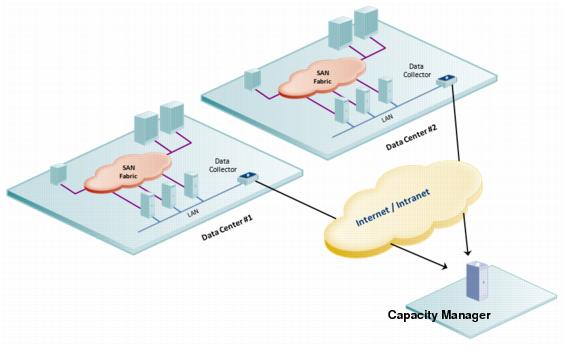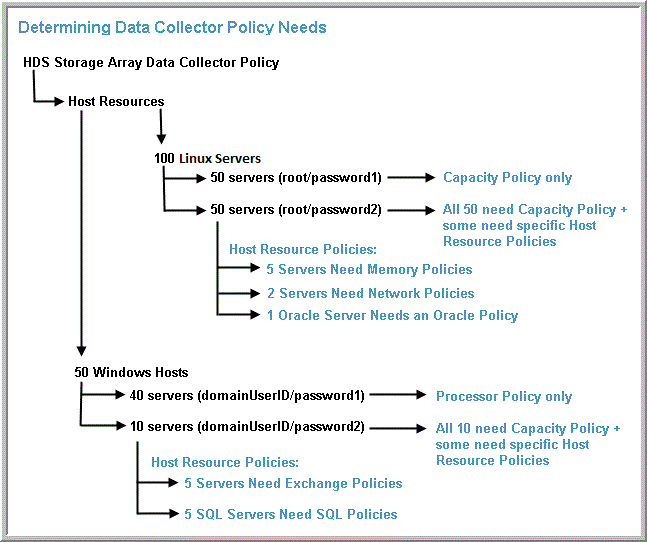Architecture Overview
Capacity Manager provides end-to-end storage capacity reporting from the hosts to the storage arrays. The Data Collector is a software component that is responsible for interfacing with one or many storage arrays for information related to the capacity management environment. In most cases, the Data Collector software module can reside on any server within your network that is Java 1.7 compatible and, where applicable, has a working copy of specific storage array command line utilities already installed. The exception is EMC Symmetrix, which requires the Data Collector to reside on the server that manages the arrays. The following diagram illustrates how the Capacity Manager Data Collector could be deployed in your environment:
Figure 1.1 Data Collector for Capacity Manager
The Data Collector obtains all of its monitoring rules from a configuration file maintained in the database. This file is called the Data Collector Configuration File and is stored in the database in XML format. When the Data Collector is first started, it downloads the Data Collector Configuration File from the database. The Data Collector uses this file to determine the list of storage arrays that are to be monitored and included in its data polling.
In most cases, a single instance of the Data Collector can support any number of storage arrays. The only real limitation is the memory and CPU processing power of the server on which the Data Collector resides. For each storage array, the Data Collector will establish connections to the database. The Data Collector Configuration file contains all the connection information for each server including such parameters as the hostname / IP address of the server.
The Data Collector communicates with the storage array’s system service processor (SSP) to gather storage capacity data. The information is then sent via http(s) to the Portal. Users can then access the Portal via a web browser.
Which Data Collector Policies Are Needed?
Policies need to be configured via the Portal to establish communication with the installed Data Collectors. The following example illustrates a typical Capacity Manager deployment for array and host data collection.
In this example of 100 Linux hosts:
• 50 hosts will have only capacity information collected
• Another 50 hosts will have capacity information collected, plus some of those will also have Host Resources data collected:
• 5 Memory
• 2 Network
• 1 Oracle Server


